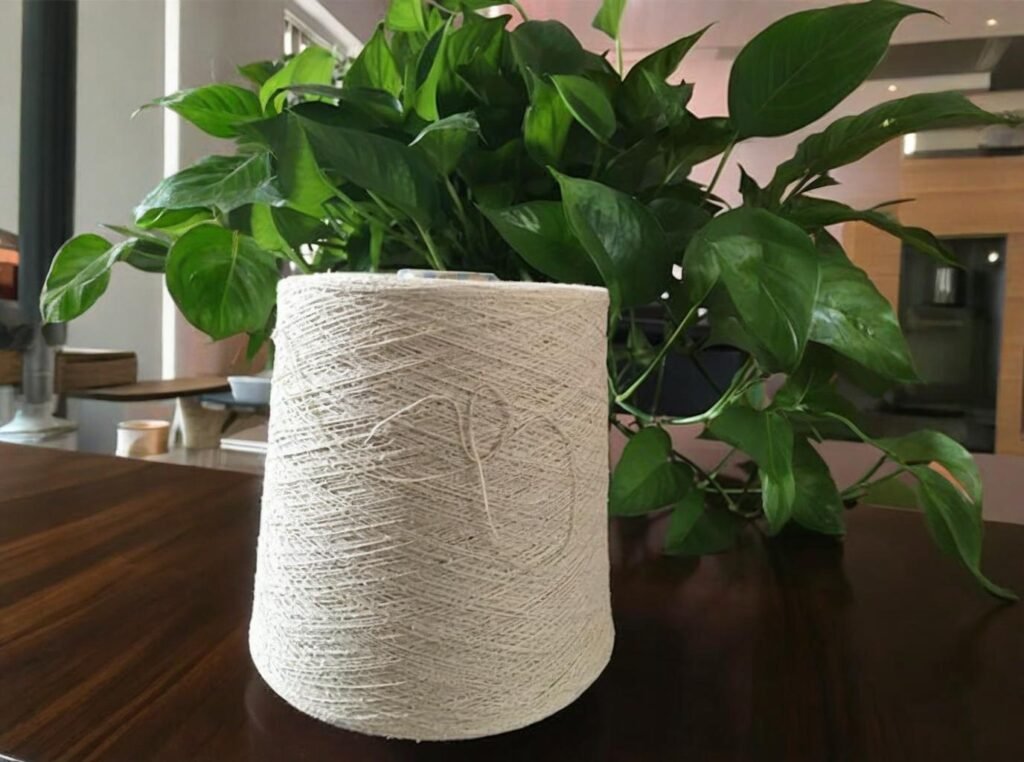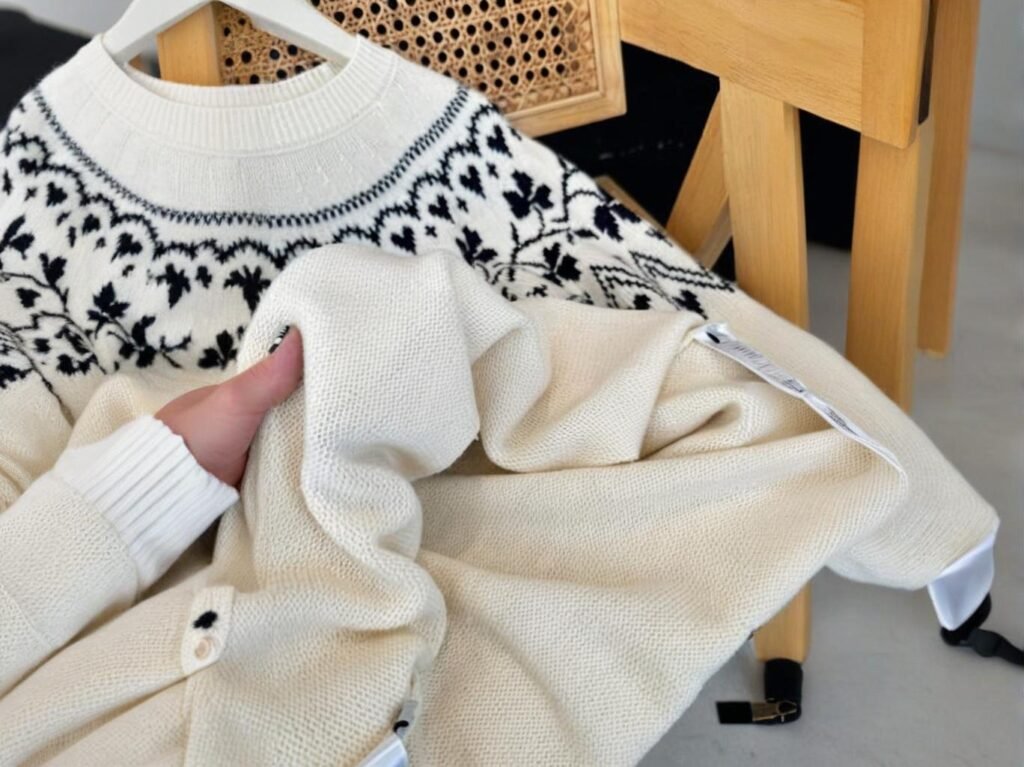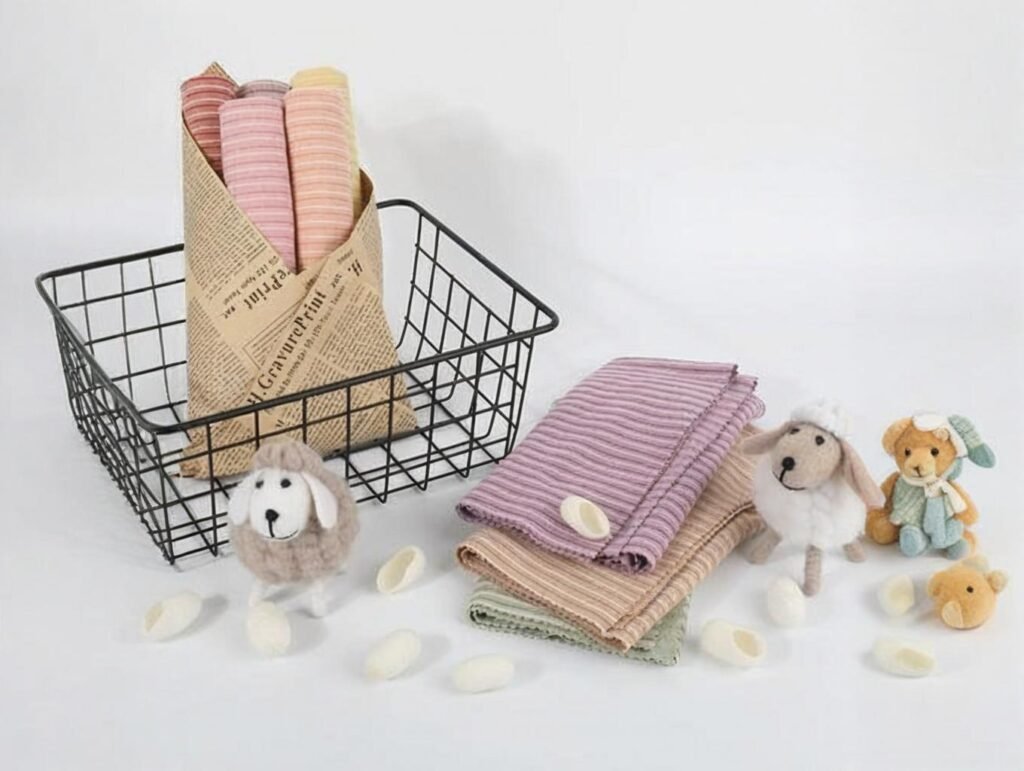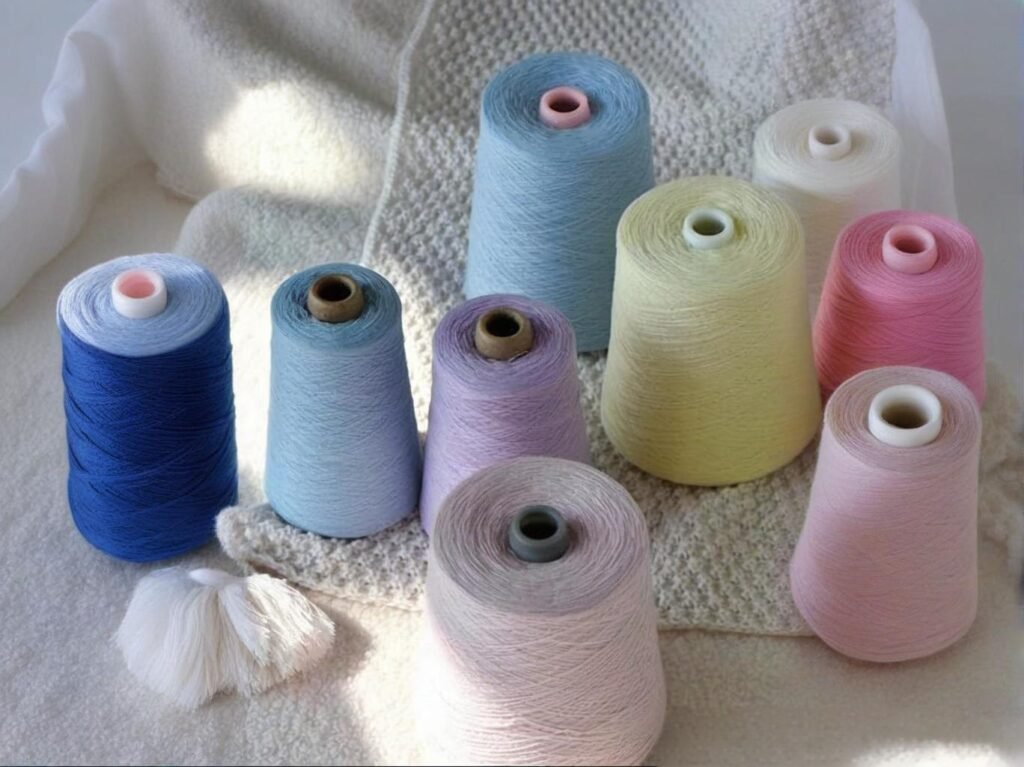Color sells. In fast fashion and winterwear collections, bold reds, jewel-tone purples, and warm neutrals must stay vibrant after dozens of washes—or you risk losing customer loyalty and facing costly returns. For acrylic garments, especially those produced at scale, colorfastness isn’t just a quality indicator—it’s a brand reputation safeguard.
To ensure colorfastness in mass production of acrylic fabric clothes, manufacturers must use suitable dyeing methods (such as cationic or solution dyeing), perform rigorous lab testing (AATCC/ISO standards), and tightly control pre-treatment, batch consistency, and post-dye finishing processes.
A leading European scarf brand once suffered a 12% return rate in Q4 due to inconsistent fading across two batches of acrylic knitwear. After switching to a factory that used solution-dyed yarns and batch-level testing, the return rate dropped to under 2% the following season—with higher repurchase rates as a bonus.
In this article, we’ll explore the science and manufacturing logic behind acrylic colorfastness, showing B2B buyers and production managers how to get consistent results at scale.
What Does Colorfastness Mean in Acrylic Fabric Clothing?

Colorfastness refers to a fabric’s ability to retain its original color without significant fading, bleeding, or transfer during washing, exposure to light, abrasion, or perspiration. In acrylic garments, maintaining color vibrancy is essential for perceived quality, brand image, and repeat customer value.
The Many Faces of Colorfastness in Apparel
Types of Colorfastness Critical for Acrylic Clothing
| Colorfastness Type | Definition | Typical Concern in Acrylic |
|---|---|---|
| Washing Fastness | Resistance to fading after laundering | High |
| Light Fastness | Resistance to sunlight fading | Medium–High (especially for outdoorwear) |
| Crocking Fastness | Resistance to color rubbing off on other fabrics | Medium |
| Perspiration Fastness | Resistance to body sweat during wear | Medium |
Why It Matters in Mass Production
- Retail Shelf Appeal: Consistent color saturation helps garments stand out and feel premium.
- Customer Retention: Poor colorfastness = refund risk.
- Brand Reputation: Faded sweaters or scarves after one wash damage your value proposition.
Case Study: A Korean fashion label had 18 SKUs made of piece-dyed acrylic knits. Within two months, customer complaints regarding color bleeding after laundry led to 800+ returns. They later shifted to solution-dyed yarns and saw near-zero complaints in the following drop.
Consumer Perception Impact Surveys show that 60% of buyers rate color fading as a major reason for not repurchasing a brand, especially for:
- Dark-colored garments
- Printed acrylic knitwear
- Outerwear exposed to UV light
How Is Colorfastness Measured in Acrylic Textiles?
Colorfastness in acrylic textiles is measured using standardized lab tests that simulate real-world wear and care conditions. These tests quantify how much dye remains on the fabric after exposure to friction, water, detergent, UV light, and human perspiration.
Colorfastness Testing Standards and Interpretation
Common Testing Standards
| Test Type | Standard | Test Method |
|---|---|---|
| Washing Fastness | AATCC TM61 / ISO 105-C06 | Launder with detergent at set temperature/time |
| Light Fastness | ISO 105-B02 | Expose fabric to artificial sunlight (xenon lamp) |
| Crocking (Rubbing) | AATCC TM8 / ISO 105-X12 | Rub dry or wet cloth on fabric surface |
| Perspiration Fastness | ISO 105-E04 | Simulate body sweat exposure (acid/alkaline) |
Grading Scale Most test results are scored on a 1–5 or 1–8 scale, where:
- 1 = Poor color retention
- 5/8 = Excellent performance
- Most commercial buyers require Grade 4 or above
| Test Scenario | Acceptable Grade | Notes |
|---|---|---|
| Home laundering | 4–5 | Fast fashion minimum requirement |
| Retail window display items | 5–6 | Higher lightfastness needed (UV exposure) |
| Dark-colored acrylic items | ≥4.5 | Prevent visible fading |
Instrumentation and Tools Used
- Spectrophotometers: For delta E (∆E) color difference measurements
- Grey Scales: Visual tools used to judge staining or color change
- Xenon Arc Lamps: Used to mimic natural sunlight exposure over time
Tip for B2B Buyers: Always request test reports with batch-specific results from your supplier—especially for dark or neon-colored acrylic fabrics.
What Dyeing Methods Work Best for Acrylic Fabric Colorfastness?

For acrylic fabric, cationic dyeing and solution dyeing are the most effective techniques to achieve excellent colorfastness. These methods create stronger bonds between dye molecules and the fiber structure, minimizing washout, fading, and migration during mass production and daily wear.
Dyeing Technologies and Their Impact on Acrylic Fabric Quality
Cationic (Basic) Dyeing Acrylic’s structure is hydrophobic and non-polar, making it unsuitable for traditional acid or reactive dyes. Instead, cationic dyes, which are positively charged, form ionic bonds with the slightly negative sites in polyacrylonitrile chains.
| Feature | Performance |
|---|---|
| Bond Strength | High (ionic bonding) |
| Colorfastness Rating | Grade 4–5 (ISO 105-C06, TM8) |
| Common Uses | Knitwear, sweaters, scarves, gloves |
| Processing Time | Moderate (\~40–60 minutes) |
| Temp/PH Requirements | 95–100°C, pH 4.5–5.5 |
Case Example: A textile mill in Bangladesh switched from piece-dyeing with reactive dyes to cationic dyeing for 100% acrylic winter caps. Their post-wash color loss dropped from 18% to under 4% per lab test.
Solution Dyeing (Mass Coloration) This method adds color pigment during the fiber extrusion stage, so the color becomes part of the polymer chain itself—not applied on the surface.
| Feature | Performance |
|---|---|
| Color Penetration | 100% (through-core dye) |
| UV Resistance | Excellent (ISO 105-B02 Grade 5–6) |
| Water Usage | Extremely low |
| Batch Consistency | High across 1,000+ kg yarn lots |
| Common Uses | Outdoor apparel, promotional knitwear |
Real-World Result: A Spain-based fashion exporter used solution-dyed acrylic yarns for a 60,000-unit scarf production run. There was zero batch color deviation, which reduced their QA time by 20% and avoided costly returns.
Other Methods:
- Dope Dyeing: Similar to solution dyeing; often used in industrial-grade fibers
- Package Dyeing: Used for yarns in small batches, not ideal for mass production
- Piece Dyeing: Generally avoided for acrylic due to low fiber affinity
Recommendation Summary
| Dyeing Method | Colorfastness | Best Use Scenario |
|---|---|---|
| Solution Dyeing | ★★★★★ | Large-scale outdoor or seasonal runs |
| Cationic Dyeing | ★★★★☆ | Mass-market winterwear |
| Piece Dyeing | ★★☆☆☆ | Short-run or test batches |
Which Pre-Treatment Processes Improve Dye Absorption in Acrylic?
Pre-treatment is a critical—but often overlooked—step in ensuring colorfastness and dye uniformity in mass acrylic fabric production. The right pre-treatment removes surface contaminants, opens up fiber pores, and improves dye bond strength.
The Science Behind Pre-Treatment for Dye Consistency
Key Pre-Treatment Stages for Acrylic
- Scouring (Detergent Washing) Removes oils, sizing agents, and waxy residues that inhibit dye absorption. Parameter Recommended Range Temp 60–80°C Time 20–30 mins Chemical Used Non-ionic surfactants, detergents
- Antistatic Treatment (Optional) Especially important in dry environments or high-speed production where static affects dye uptake uniformity.
- pH Conditioning Cationic dyes require a slightly acidic pH. Adjusting the fiber environment to pH 4.5–5.5 before dyeing improves ionic bonding. Recommended Buffering Agent Acetic Acid or Sodium Acetate
- Heat Conditioning Slight pre-heat treatments can relax the fiber structure and allow for better dye penetration, especially in tightly spun yarns.
Best Practice Tip: Always use demineralized water during scouring to avoid interference from calcium or magnesium ions that affect dye behavior.
Impact of Pre-Treatment on Colorfastness
| With Proper Pre-Treatment | Without Pre-Treatment |
|---|---|
| Dye Penetration: Deep | Dye Penetration: Superficial |
| Shade Consistency: High | Shade Consistency: Variable |
| Wash Fastness: Grade 4–5 | Wash Fastness: Grade 2–3 |
Production Insight: In a comparative trial, two batches of acrylic yarn were dyed under identical conditions except for pre-treatment. The pre-treated batch achieved ISO 105-C06 Grade 4.5 in washing fastness; the untreated batch scored Grade 2.5 and showed visible fading after 3 home washes.
How Do Different Finishing Techniques Affect Acrylic Color Durability?

The finishing stage of acrylic garment production plays a major role in determining how long color lasts through washing, sunlight exposure, and daily wear. Incorrect or aggressive finishing can undo the benefits of even the most precise dyeing process.
Finishing Methods That Support or Harm Colorfastness
Heat Setting (Thermal Finishing) Heat setting locks in both the shape and color of acrylic yarns and fabrics. It’s especially critical after dyeing, as it helps solidify the dye within the fiber and improve dimensional stability.
| Parameter | Recommended Range |
|---|---|
| Temperature | 120°C–135°C (for 2–5 mins) |
| Method | Dry heat (oven), infrared, or calendering |
Impact: Correct heat setting increases resistance to both color bleeding and garment distortion after washing.
Softening Agents Softeners improve fabric hand feel, but the wrong type or overuse can disrupt dye bonds and make color migration more likely.
- Cationic softeners: Compatible with cationic dyes; preferred
- Non-ionic softeners: Neutral effect
- Anionic softeners: Should be avoided (they repel the dye)
Anti-Pilling Finishes Pilling doesn’t directly affect colorfastness, but pills can visually dull color and lead to uneven wear. Finishes like enzyme washing or anti-pilling emulsions help protect fabric appearance, especially for brushed or fluffy acrylics.
UV-Protective Coatings UV blockers help maintain dye stability for garments exposed to sunlight (scarves, hats, outerwear). They are especially useful for bright or neon shades that fade faster.
| Finishing Add-On | Colorfastness Benefit |
|---|---|
| Cationic softener | Enhances dye lock-in |
| Heat setting | Prevents migration, improves wash durability |
| UV treatment | Inhibits sun-induced fading |
| Anti-pilling agent | Protects surface from wear |
Case Study: A German accessories manufacturer added UV-blocking finish to their acrylic scarves after test reports showed 28% more fading in untreated samples over 6 weeks of display. Treated items maintained >90% of original color.
Avoid:
- Excess mechanical agitation during finishing (can damage dye-fiber bond)
- Overdrying at temps above 150°C (can cause dye degradation)
What Common Problems Cause Color Fading in Mass Production of Acrylic Apparel?
Even with advanced dyeing and finishing processes, color fading still occurs if quality controls are inconsistent or environmental variables are ignored. Understanding these root causes can help manufacturers prevent losses and protect brand integrity.
Root Causes and Their Practical Solutions
1. Dye Bath Instability
- Cause: Inconsistent pH, poor circulation, temperature fluctuation
- Impact: Uneven shade, incomplete fixation
- Solution: Use automatic dosing systems and real-time bath monitoring
2. Insufficient Pre-Treatment
- Cause: Oils, sizing, or debris left on fabric/yarn
- Impact: Blocked dye penetration; poor wash fastness
- Solution: Implement thorough scouring and pH conditioning
3. Poor Quality Dyes
- Cause: Use of low-grade or inappropriate cationic dyes
- Impact: Quick fading under UV, poor bonding
- Solution: Use dyes from reputable suppliers (with ISO-tested certifications)
4. Overdyeing or Underfixing
- Cause: Dye quantity too high or curing time too short
- Impact: Surface dye washes off easily
- Solution: Optimize dye-to-fiber ratio, apply post-dye fixation rinse
5. Wrong Finishing Agents
- Cause: Use of anionic softeners or incompatible coatings
- Impact: Dye migration, color washout
- Solution: Test all auxiliaries in lab-scale before bulk application
6. Inadequate Quality Control
- Cause: No batch testing or random sampling
- Impact: Issues only found after retail launch
- Solution: Implement in-line shade control and third-party lab testing
| Problem | Prevention Strategy |
|---|---|
| Uneven shades | Auto-dye bath calibration |
| Fading after 3 washes | Use solution dyeing or heat setting |
| Sunlight discoloration | Add UV-protective finish |
| Customer complaints | Conduct AATCC/ISO testing per batch |
Real-World Insight: A fast fashion brand manufacturing 40,000+ acrylic sweaters per season reduced color complaints by 85% after implementing inline spectrophotometer checks and switching to softeners tested for dye compatibility.
How Can Manufacturers Maintain Color Consistency Across Large Batches?

Maintaining color consistency in acrylic garments across large-scale production runs is both a technical and logistical challenge. Even minor variations in temperature, dye concentration, or yarn batch can lead to shade differences that frustrate quality control teams and damage brand trust.
Methods and Tools for Batch-Level Color Matching
Standardize Inputs Across All Batches
- Use pre-tested yarn lots from the same supplier
- Use solution-dyed acrylic when shade accuracy is critical
- Keep water source and hardness levels constant (or treated)
Implement Lab-to-Bulk Matching Protocol
- Start with a lab dip based on Pantone or buyer-provided swatches
- Approve sample under D65 lighting to simulate natural daylight
- Maintain a master standard and compare all batches against it
Use Spectrophotometers for Digital Color Management
| Device Type | Function |
|---|---|
| Bench-top Spectrophotometer | Measures reflectance and ∆E between standard and sample |
| Portable Colorimeter | Useful for on-floor batch comparisons |
Monitor and Log Every Batch
| Batch Control Factor | Recommended Practice |
|---|---|
| Temperature Monitoring | Use data loggers in dyeing machines |
| Dye Dosage Accuracy | Use auto-dosing systems for precision |
| Shade Matching | ∆E ≤ 1.0 for premium brands; ∆E ≤ 1.5 acceptable for fast fashion |
| Production Lot Labeling | Tag fabric rolls by batch & shade lot |
Example: A Canadian knitwear brand producing 80,000+ acrylic garments each winter implemented real-time ∆E tracking software. This reduced shade-related rejections by 60% and boosted repeat PO rates with major e-commerce partners.
Best Practice: Conduct inline and final inspection using both machine and human eye evaluation. Always approve garments under multiple light sources (daylight, LED, tungsten).
How Should B2B Buyers Choose Reliable Suppliers for Color-Stable Acrylic Clothing?
Choosing the right acrylic fabric supplier is essential to ensure long-term color consistency, low return rates, and strong product perception in competitive retail markets. A qualified manufacturer must offer technical expertise, process control, certifications, and transparent testing support.
The Sourcing Checklist for Colorfast Acrylic Production
1. Evaluate Fabric or Yarn Sourcing Strategy
- Ask whether the supplier uses:
- Solution-dyed yarns for bulk projects
- Cationic dyeing for small batch flexibility
- Certified dye suppliers with ISO testing history
2. Request Test Reports Always ask for lab documentation per batch:
- AATCC TM61 or ISO 105-C06 (wash fastness)
- ISO 105-B02 (lightfastness for outdoor items)
- Grey Scale ratings for staining and color change
- Fabric ∆E values for color matching confirmation
3. Look for Certifications
- OEKO-TEX® Standard 100: Safe for skin-contact items
- REACH Compliance: EU-regulated chemical safety
- ISO 9001: Quality control in production
- GOTS/GRS (if blended or recycled fibers involved)
4. Inspect Supplier Capabilities
| Sourcing Criteria | SzoneierFabrics Capability |
|---|---|
| Lab dips & custom color matching | ✅ |
| Solution-dyed and cationic dye options | ✅ |
| Batch-level fastness testing reports | ✅ |
| Low MOQ + rapid sample turnaround | ✅ |
| OEKO-TEX® and REACH compliance | ✅ |
5. Consider Communication and Support
- Can the supplier interpret test results and offer process advice?
- Do they offer after-sales quality assurance?
- Are they willing to produce and revise lab dips until perfect?
Client Feedback: A mid-size Scandinavian fashion label partnered with SzoneierFabrics to produce 5 colorways of their acrylic knit top collection. The Szoneier team provided ΔE-tested lab dips, shared pre-treatment protocols, and ensured consistent shades across 12,000+ garments—with 0% return rate due to color mismatches.
Achieving Colorfastness in Acrylic Garment Production Starts with Smart Systems and the Right Supplier
Colorfastness in acrylic clothing isn’t just about choosing the right dye—it’s about the entire ecosystem of sourcing, pre-treatment, dyeing, finishing, and testing. For mass production, failure in any one step can compromise batch integrity, lead to costly returns, and impact your brand’s reputation.
But with the right protocols—and the right partner—you can produce high-color-retention acrylic garments that consistently meet customer expectations, even after repeated washes or sunlight exposure.
Ready to Customize Color-Stable Acrylic Garments?
At SzoneierFabrics, we help B2B buyers worldwide achieve color-consistent, durable, and vibrant acrylic fabric products for fashion, accessories, and seasonal apparel collections.
Why Partner with SzoneierFabrics?
- ✅ Solution-dyed and cationic-dyed acrylic options
- ✅ Lab-tested colorfastness reports (AATCC / ISO standards)
- ✅ Low MOQs, fast sample turnaround
- ✅ OEKO-TEX® certified and REACH compliant
- ✅ Full technical support for dyeing and finishing

